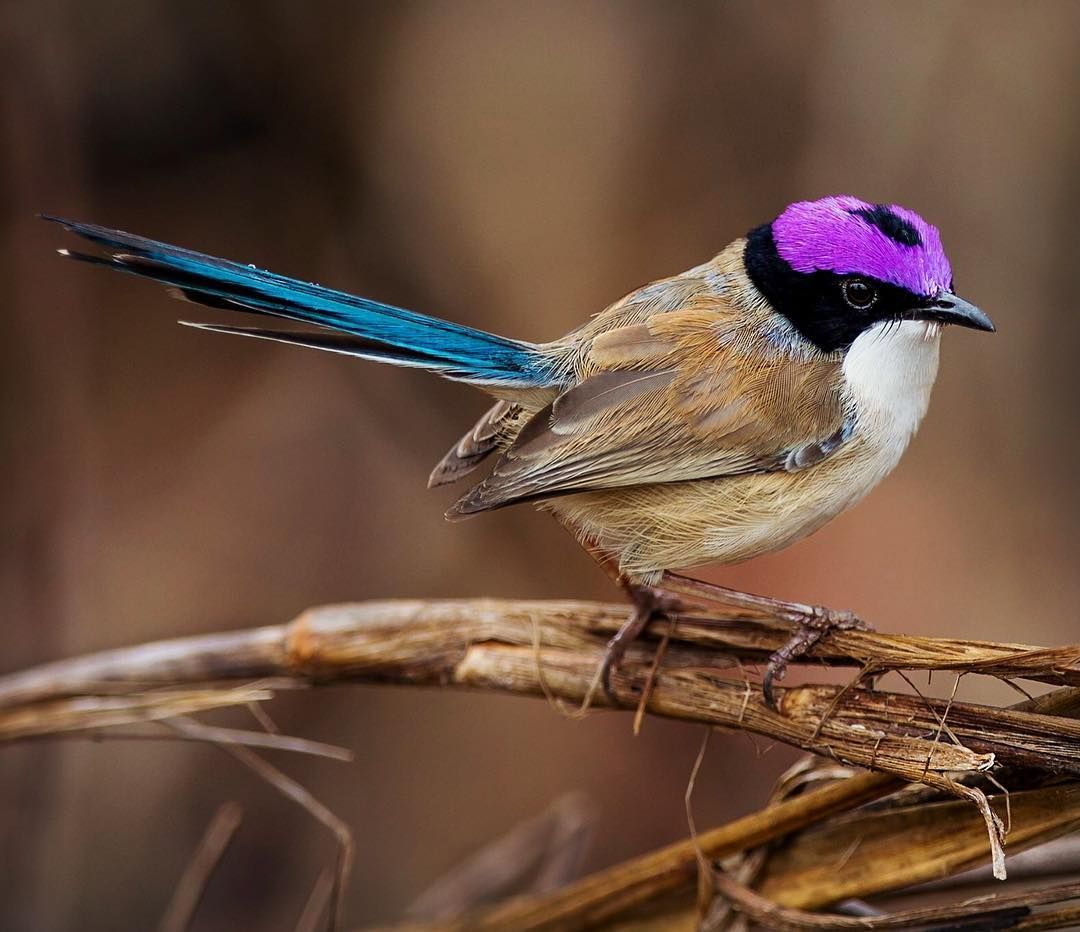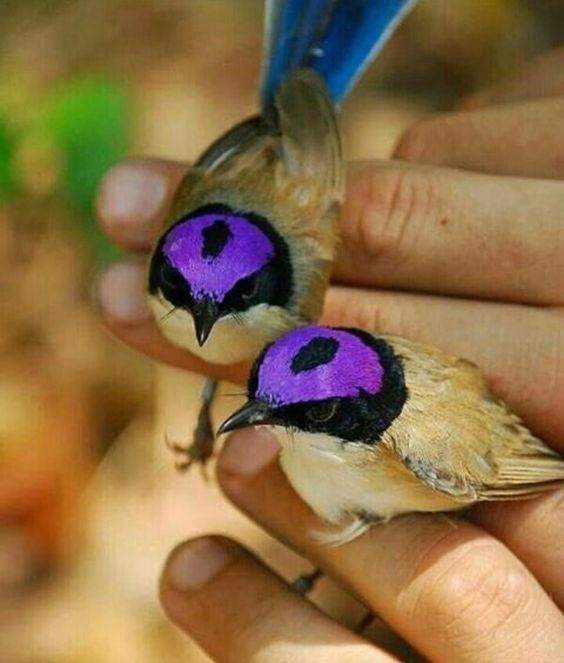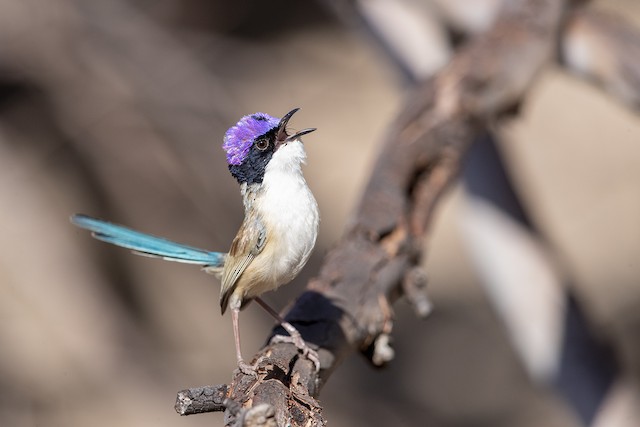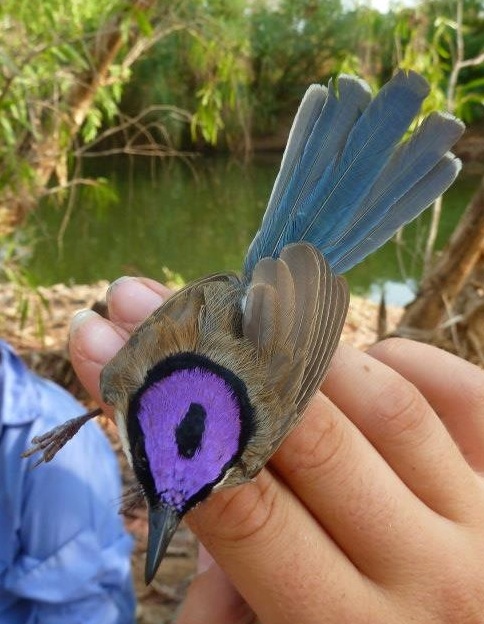The little bird with a fluorescent purple crown is a delightful sight on a dreary winter day. Say hello to the Purple-crowned Fairywren! Belonging to the Australasian Maluridae wren family, this bird species is easily recognized by the male’s purple crown, black eye line, and collar during breeding season. Its cheek patches and deep blue tail also set it apart. The overall plumage of this bird is brown, with a more greyish-brown hue on its wings and a buff cream belly.

The bird’s body is dark in color, with black feathers and brownish-grey legs and feet. The appearance of female birds is almost identical to their male counterparts, except for the absence of the male’s distinctive purple crown. Instead, they have a rusty cheek patch and black eye line.

The purple-crowned fairywren is a species of bird found in the wet-dry tropical regions of northern Australia. They are commonly found in the Kimberley region of Western Australia, as well as the Victoria River region of the Northern Territory. They can also be spotted in the southwestern sub-coastal areas of the Gulf of Carpentaria in Queensland.

The avian creatures referred to as riparian habitat specialists are fond of dense riverbank vegetation in Northern Australia. They thrive in areas with well-developed mid-story foliage, primarily composed of dense shrubs, alongside permanent freshwater creeks and rivers, such as those found in the Kimberley region. Tall and thick river grass in the Victoria River District is also an ideal habitat for them.

The Purple-crowned Fairywren is primarily a small invertebrate eater, feeding on creatures such as beetles, ants, bugs, wasps, grasshoppers, moths, larvae, spiders, and worms. They also consume a considerable amount of seeds.

Breeding of pests can occur at any time of the year, provided the conditions are suitable. Typically, these creatures construct their nests close to the ground in thickets of river grass. The female builds a dome-shaped nest using fine rootlets, grass, leaves, and strips of bark. Over the course of several days, she lays a clutch of 2-3 eggs, which she incubates for a period of 14 days. Upon hatching, the chicks are fully fledged after approximately 10 days. Nonetheless, they are still unable to fly and tend to stay in dense cover, where they are fed by family members for about a week.

According to the International Union for Conservation of Nature (IUCN), the Purple-crowned Fairywren is listed as the species of Least Concern. However, two recognized subspecies of this bird are now receiving attention for conservation management. The western subspecies has recently been upgraded from Vulnerable to Endangered status, while the eastern subspecies is now classified as Near Threatened. Habitat loss due to dam construction and the introduction of livestock, such as sheep and cattle, is the primary threat to this species.

